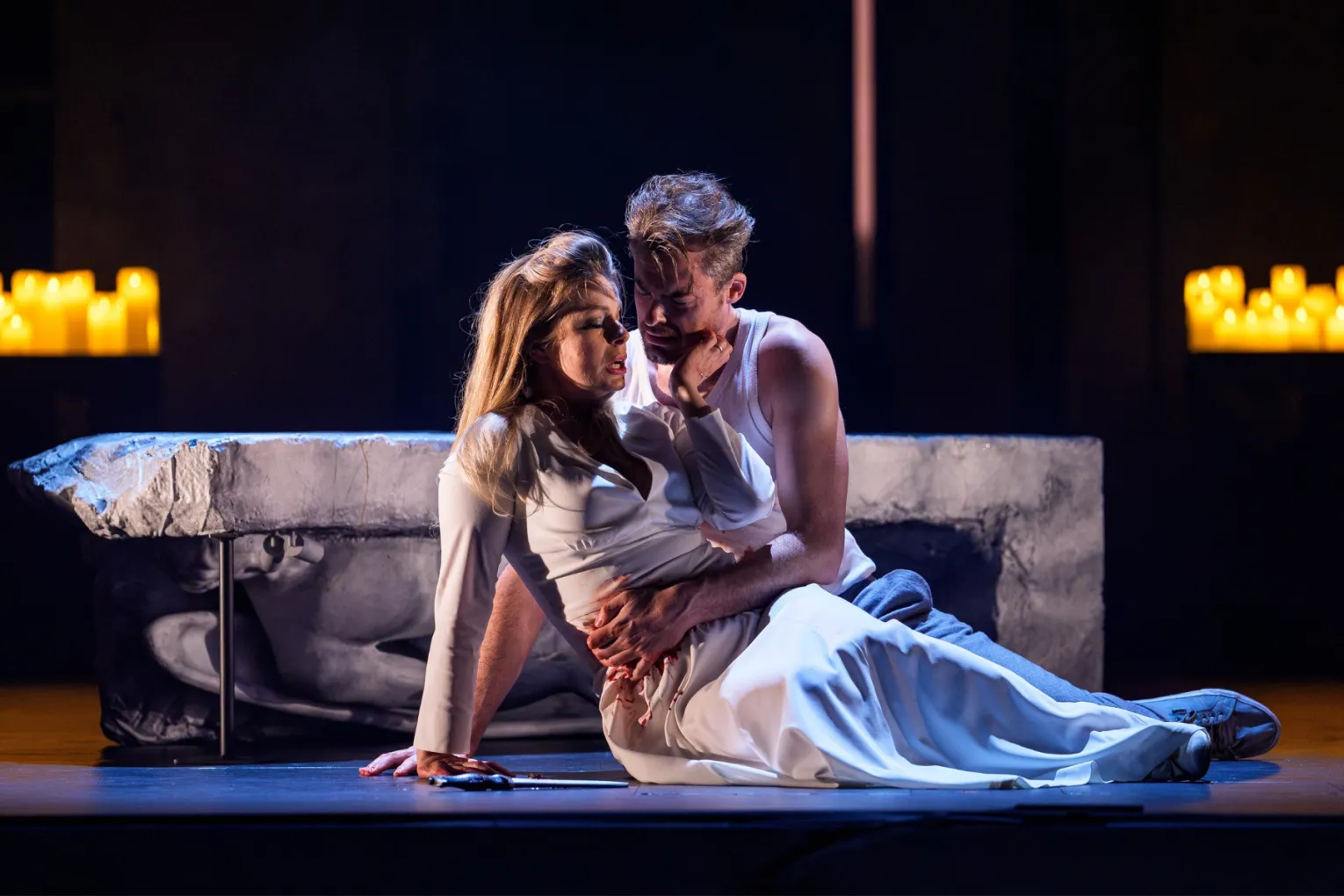State Opera’s Roméo et Juliette wakes audiences with a jolt
Created and produced by State Opera SA, this provocative version of Gounod’s Roméo et Juliette sure sets the cat among the pigeons.

“Down with Gounod! Long live Xenakis!”, proclaimed a banner unfurled by a bunch of recalcitrant students from the windows of the Paris Conservatoire in May, 1968.
So resentful were they against all things conservative that they led a riot with this slogan, declaring the avant-garde composer Iannis Xenakis as their new champion.
These days, we might be more charitable towards the father of French opera, Charles Gounod. Soaked as he is in romantic idealism, there’s not a blade of the revolutionary about him, but his two most remembered works, Faust and Roméo et Juliette, nevertheless remain exquisite works if done well.
And if his sweetly ripe melodies do get a bit soporific at times, this State Opera SA staging of the latter opera is sure to wake one up with a jolt.
The rival families of Verona, the Montagues and the Capulets, become two gun-toting gangs who face off threateningly the moment the curtain rises. Two young kids dressed in white bravely stride in and put everyone’s pistols to the floor.
The tension is already high, like Bernstein in West Side Story, and one wonders if this production by the Greek-born, French-trained director Rodula Gaitanou will quickly descend into a bloodbath even before the Overture is finished.
You might like
Guns and daggers make this a more violent Roméo et Juliette than one might ever have imagined, but a counterpoising theme of innocence is played out by the recurring presence of this young boy and girl.
By the end, it is not just the two lovers’ death whom we mourn: these kids meet an even untimelier demise in Act 1. Their bodies are funereally carried across the stage on stretchers after Tybalt discovers deceit in the house of Capulet.
Where this production really sets the cat among the pigeons, though, is how it subverts realism through freewheeling fantasy. As everyone will remember if they studied Shakespeare at school, the first act begins with an extravagant masked ball in the Capulet palace.
Along with her Greek compatriot designer takis, Gaitanou has concocted what may be one of the zaniest costume parties ever staged. Putting their pistols aside, the Capulets are now adorned in frilly skirts, boas and feathers – men and women.
The colours are riotous, and their 1980s dance moves almost annoyingly funny. The choreography is deliberately disarranged, some singers doing it better than others; but top marks to State Opera Chorus for their overall look and pin-sharp ensemble in this, and every, choral number.
It is interesting how much humour Gaitanou finds in this most serious of Shakespearean tragedies. In Act 2’s garden scene and the famous moment where Juliet appears on the balcony, a skyful of stars light up just in case we didn’t know they are in love.
Subscribe for updates
Siobhan Stagg as Juliette and Kyle Stegall as Roméo don’t exactly share a close chemistry, but they sing well here. Vivacious in her role, Stagg hits an early highpoint in this opera’s biggest aria, ‘Ah! Je veux vivre’ in Act 1, dispatching this stunningly well. Stegall is an intensely serious Romeo, and his singing opens up quite prodigiously as passion mounts.
Consisting of concrete slabs, iron doors and neon lights, that garden scene maintains the rather charmless industrial look of the stage sets – again thumbing a nose at tradition.
Worse, or better still, depending on one’s preparedness to go along with all these quirks, is the final tomb scene in Act 5 when, in their dying throes, these two lead roles lie together quivering on the marble slab. Glittering stars accompany their orgasmic writhing. Funny, warped, or defiantly serious? Take your pick.
If it cannot seem to make up its mind whether it is a gangland crime show, an 80s disco party, or a Hollywood tragicomedy, the intention is plainly about disrupting any kind of conventional reading. Another instance is how it flouts gender stereotypes.
Tybalt, excellently played by Tomas Dalton, races around angrily in an orange skirt, while Charlotte Kelso, equally memorable in the ‘trouser role’ of Stéphano, brandishes a dagger provocatively against her groin.
The charge made against Gounod concerns a pervasive sentimentality in his vocal writing, and a lack of daring that we see, for example, in Berlioz. With a production as blatantly wilful as this, that complaint tends to recede.
Gutsy vocal performances help even more, and thankfully there are enough of these. Morgan Pearse as Mercutio stands out especially: his ballad to Queen Mab in Act 1 is exceptionally strong. There are fine contributions also by Catriona Barr (as Juliet’s maid Gertrude) and the many other male roles including Pelham Andrews (Frère Laurent), Eugene Raggio (Capulet) and Nicholas Lester (the duke of Verona).
As for Stagg and Stegall, they put in outstanding individual performances but do need more eye contact and adoring looks to clinch any romance.
There’s wonderful strength in the pit with conductor Dane Lam and the ASO. Pacing is excellent, and line and shape feel assuredly definite. They just don’t put a foot wrong in the entire two hours. All up, there’s a sense of very considerable commitment coming from this impressively large, all-South Australian team.
If you can handle its idiosyncrasies, this production’s rewards make it well worth seeing. Any revolutionary will be sufficiently pleased.
This is a review of opening night. Roméo et Juliette repeats on 25 and 30 October and 1 November at Her Majesty’s Theatre.
Free to share
This article may be shared online or in print under a Creative Commons licence

